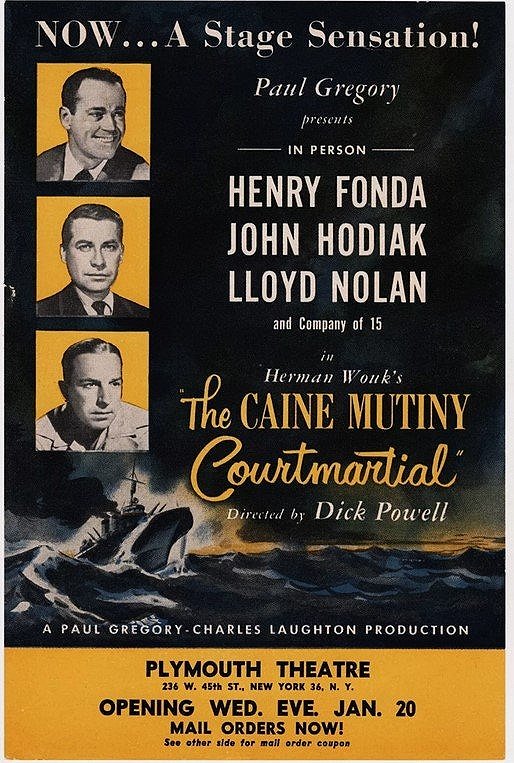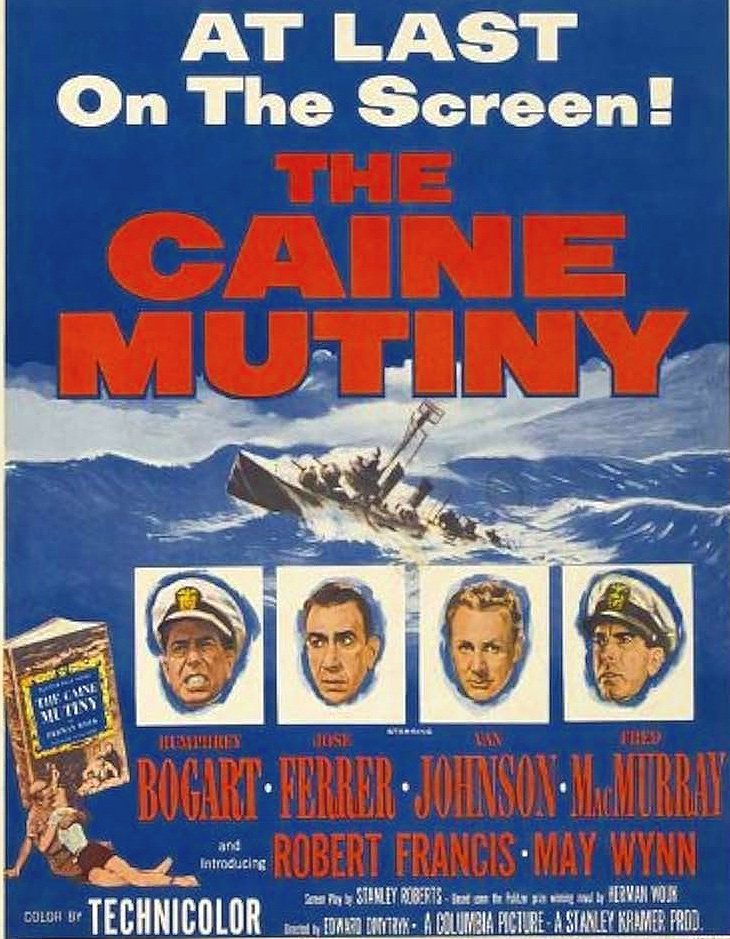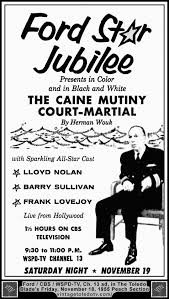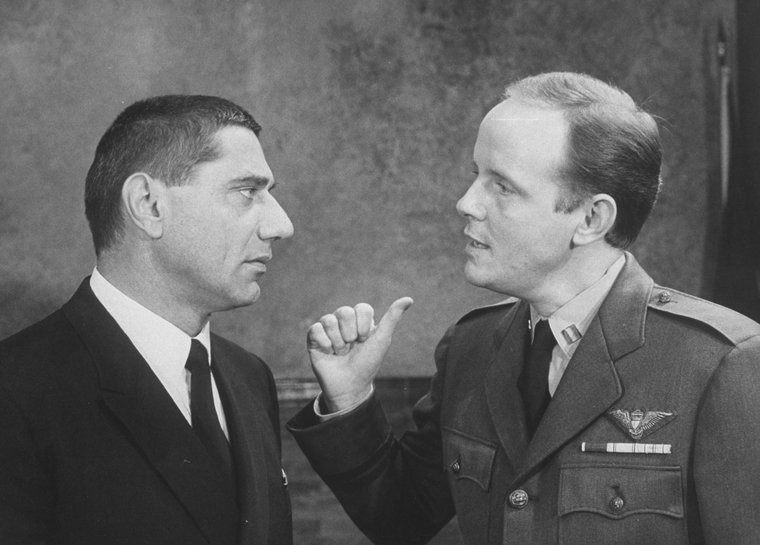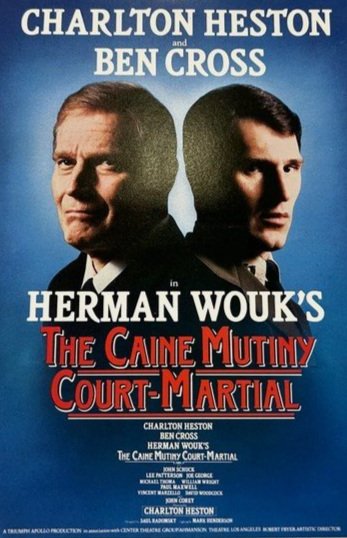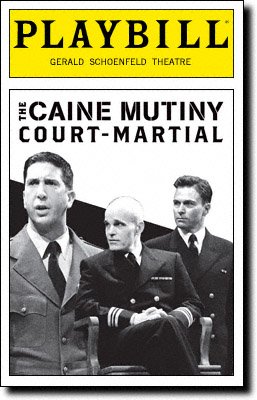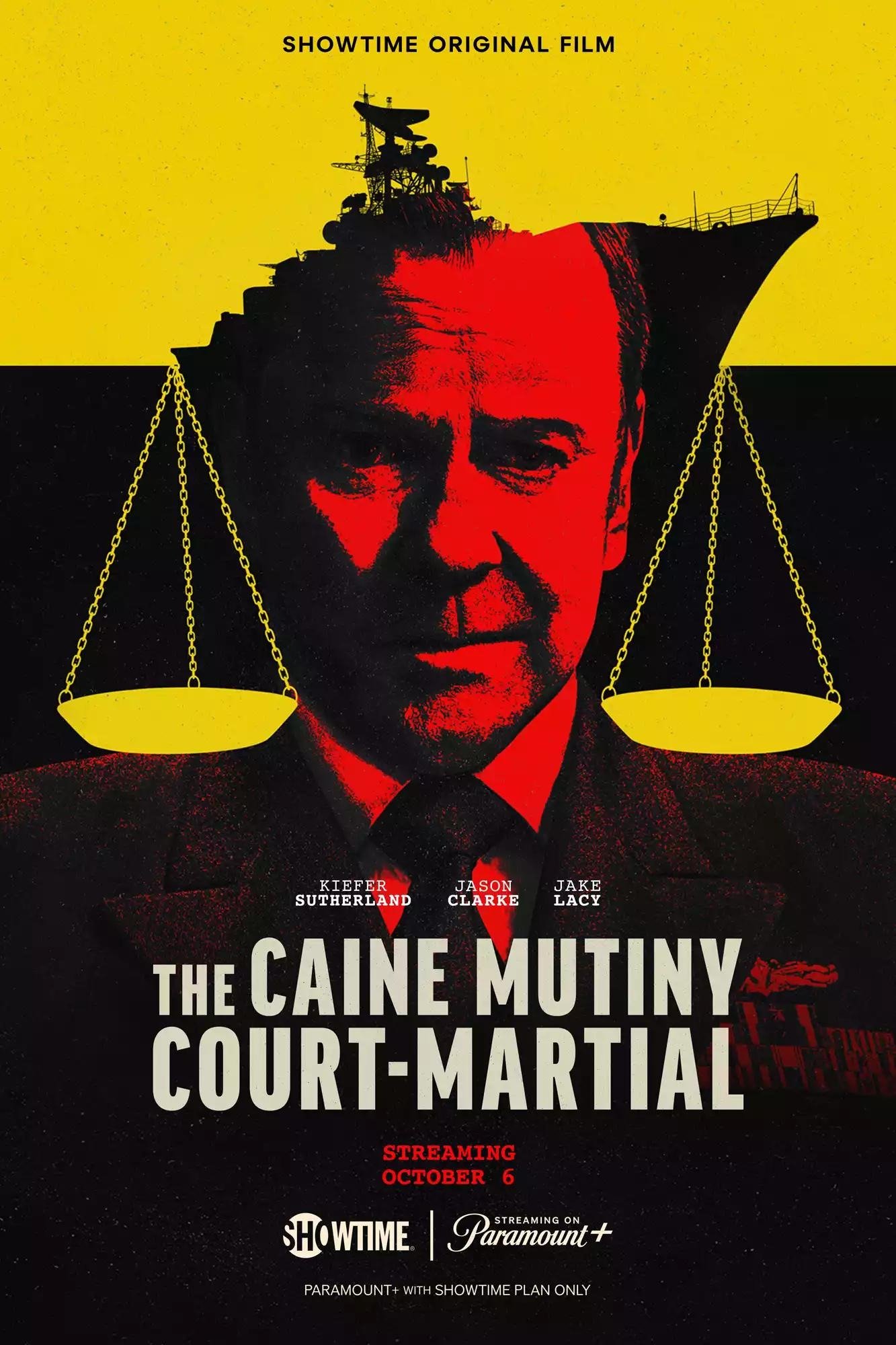Judson Theatre Company’s spring production (April 24-27, 2025) will be Herman Wouk’s The Caine Mutiny Court-Martial. Directed by JTC’s artistic director Daniel Haley, it marks the return of Emmy Award winner John Wesley Shipp (The Flash, Dawson’s Creek) to the Judson stage in the iconic role of Captain Queeg. He was last on our stage in 2016(!) in Twelve Angry Men. Joining him will be David A. Gregory (One Life to Live, The Good Fight) as Greenwald.
We’re also happy to welcome back some JTC favorites: Jacob Pressley in his first mainstage show; he’s previously been our leading man in the Summer Theatre Festival productions of They’re Playing Our Song, The Last Five Years, and Gutenberg! The Musical. Matthew Tyler will be back for his fifth mainstage show, having been seen in And Then There Were None, Witness for the Prosecution, The Mousetrap, and Gaslight. After a multi-year absence from our stage, we will also welcome Rick McDermott back; he’s appeared in more shows at JTC than any other actor: Twelve Angry Men, And Then There Were None, The Sunshine Boys, The Miracle Worker, and Witness for the Prosecution.
Making their JTC debuts are Collin Conway, Colton Liberatore, and Thomas Nash Tetterton. Additional casting to be announced at a later date.
The Caine Mutiny Court-Martial is Judson Theatre Company’s first military play—we’ve long wanted to do one, we keep a spreadsheet of them, and JTC is now prepared to meet the unique challenges of doing one well. What’s interesting is that the piece has had at least one major iteration in every generation:
Original novel jacket
1951 - the Pulitzer Prize winning novel, at the time, the biggest bestseller since Gone With the Wind, spending 122 weeks on the New York Times bestseller list, with 33 weeks at #1
Flyer for Broadway production, this theatre is now named the Schoenfeld Theatre.
1953 - the play opens in LA and tours, and then debuts on Broadway in 1954…months before the release of the Columbia film version of the novel. The play is an immediate hit, running a year (415 performances). Starring Henry Fonda, Lloyd Nolan, and John Hodiak, and directed by Charles Laughton on Broadway, the play continued to tour in 1955 with other stars including Paul Douglas, Wendell Corey, and Barry Sullivan.
Poster from 1954 film version of the novel
1954 - the first film version of the story (a film version of the novel) starring Humphrey Bogart (Oscar nominated for his performance as Queeg), Jose Ferrer, Van Johnson, and Fred MacMurray
1955 - the Ford Star Jubilee television spectacular presentation of the play, with members of the cast of the first Broadway production: Lloyd Nolan won an Emmy for reprising his Broadway performance as Queeg.
1956 - Lloyd Nolan directed and starred in the original London production
1959 - Australian tv version
Joe Namath and Michael Moriarty in the 1983 Broadway revival
1983 - the first Broadway revival, at Circle in the Square ran from May-November, starring John Rubinstein and Michael Moriarty. Later in the run, Joe Namath played Maryk (his only Broadway credit).
London revival window card
1984 - Charlton Heston directed and starred in a production that played Los Angeles, London, and the Kennedy Center.
Advertisement for Robert Altman made-for-tv film of the play
1988 - the Robert Altman made-for-tv version, starring Eric Bogosian, Jeff Daniels, Brad Davis, and Peter Gallagher
2nd Playbill cover of the 2006 Broadway revival
2006 - the second Broadway revival, starring David Schwimmer and Tim Daly and directed by Jerry Zaks
Advertisement and key art for 2023 David Friedkin film version of the play
2023 - the David Friedkin film version of the play (his final film) starring Kiefer Sutherland and Lance Reddick, which moves the time period to post-9/11
Join us at BPAC’s Owens Auditorium in Pinehurst, NC to see this classic military play brought to life! Click here for tickets.


